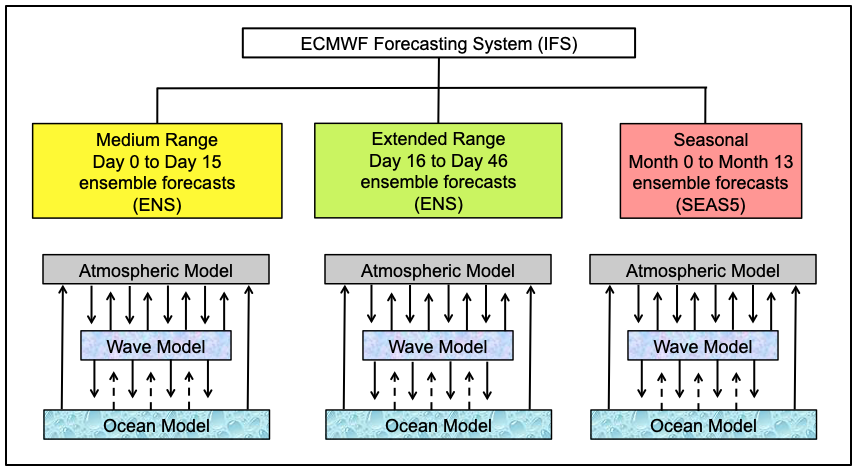Page History
...
These are outlined in Fig2-1, Fig 2-2 and Fig2-3. The models and programs run co-operatively to produce forecasts from analysis time out to days, weeks or months ahead.
Fig2-1: ECMWF Integrated Forecasting System (IFS) Illustrates interactions between components of the IFS (observation assimilation and post-processing not shown)
...
- the land is the lower boundary for the atmosphere for a less extensive area than the sea but it has a complex orography and exhibits far more temporal and spatial variability in the characteristics of energy storage and exchange.
- the lower boundary gives important feedback to the atmosphere if accurately modelled (important for short and long-range forecasting).
- the state of the landmasses (including soil moisture, cover and depth of snow, and lake ice) can change on a daily timescale and these variations can be important in certain situations during the forecast evolution. Important aspects of the modelled state of the land that can affect the atmospheric evolution include:
- rainfall absorption and soil moisture (give more information on boundary moisture flux),
- ice variations on lakes (gives more information on albedo and boundary heat and moisture fluxes),
- land/lake temperature variations for evaluation of heat fluxes,
- snow variations and extent (gives more information on albedo and boundary heat and moisture fluxes).
...
Overview
Content Tools

